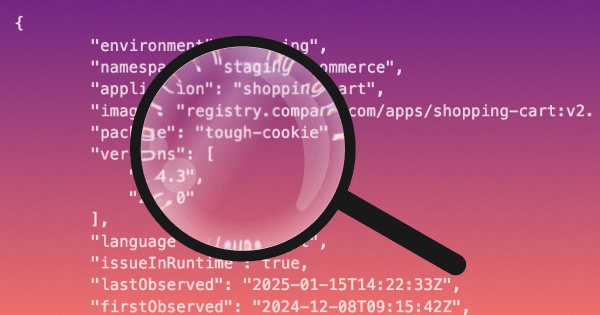
Kai at Work: A Day in the Life of an AI AppSec Engineer
Kai, Kodem’s secure-by-design AI AppSec Engineer, is integrated directly into the platform to deliver contextualized and actionable answers precisely when AppSec teams need them. By converting your existing security data into conversational intelligence, Kai eliminates the need for hours of manual investigation and context-switching. You can now ask questions as you would to a senior, humble, and tireless engineer.

CVE-2025-55182: Remote Code Execution in React Server Components
On December 3, 2025, the React and Vercel teams disclosed CVE-2025-55182, a critical remote-code-execution (RCE) vulnerability (CVSS 10) affecting React Server Components (RSC) as used in the Flight protocol implementation.

Shai Hulud 2.0: What We Know About the Ongoing NPM Supply Chain Attack
A new wave of supply chain compromise is unfolding across the open-source ecosystem. Multiple security vendors, including Aikido Security and Wiz have confirmed that the threat actor behind the earlier Shai Hulud malware campaign has resurfaced. This time, compromising NPM accounts, GitHub repositories and widely-used packages associated with Zapier and the ENS (Ethereum Name Service).

Remediation That Meets Developers in Context
Identifying issues isn’t the challenge. The challenge is effective remediation that fits your codebase, your environment and your team’s development velocity. Developers need to understand where issues originated, which packages to upgrade, what code to change and how disruptive fixes will be. Meanwhile, AppSec needs visibility into what's immediately actionable and which issues require cross-team coordination.

Part 2 — Automotive Software Security: Beyond Compliance, Toward Proof
Follow-on to Part 1: Translating regulation into runtime evidence.

Part 1 — Automotive Software Security Readiness: A Researcher’s Field Guide
Are You Ready for UN R155? The Real Work Behind Automotive Software Security Compliance

From Reachability to Reality: Proving Vulnerable Code was Executed & Exploited in Production
Memory analysis plays a critical role in turning kernel-level signals into function-level proof of execution. See which vulnerable functions actually run in your environment, cut noise and prioritize risk that exists (and is exploitable) in your running application.

Vulnerability Alert CVE-2025-4665: Critical Pre-Auth SQL Injection in WordPress Contact Form Database Plugin (CFDB7)
CVE-2025-4665 is a critical (CVSS 9.6) pre-authentication SQL injection vulnerability in the WordPress Contact Form CFDB7 Database Addon plugin. The flaw allows remote attackers to exploit insufficient input validation and unsafe deserialization without authentication, affecting versions 1.3.2 and earlier. This vulnerability enables data exfiltration, database manipulation and potential remote code execution through PHP object injection chains.

A Guide to Securing AI Code Editors: Cursor, Claude Code, Gemini CLI, and OpenAI Codex
AI-powered code editors such as Cursor, Claude Code, Gemini CLI, and OpenAI Codex are rapidly becoming part of enterprise development environments.

From Discovery to Resolution: A Single Source of Truth for Vulnerability Statuses
Continuous visibility from first discovery to final resolution across code repositories and container images, showing who fixed each vulnerability, when it was resolved and how long closure took. Kodem turns issue statuses into ownership for engineers, progress tracking for leadership and defensible risk reduction for application security.

Kai Gets Internet Access: Turning Context Into Intelligence for Product Security Teams
For years, product security teams have lived with a gap. Tools surfaced findings — CVEs, outdated packages, risky dependencies — but rarely the context to make sense of them. Engineers still had to open a browser, type a CVE into Google, skim through NVD, vendor advisories, GitHub issues, and random blogs to answer basic questions: Is this actually exploitable in our environment? Is there a safe upgrade path? Has anyone seen this exploited in the wild? This release closes that gap.

.webp)
